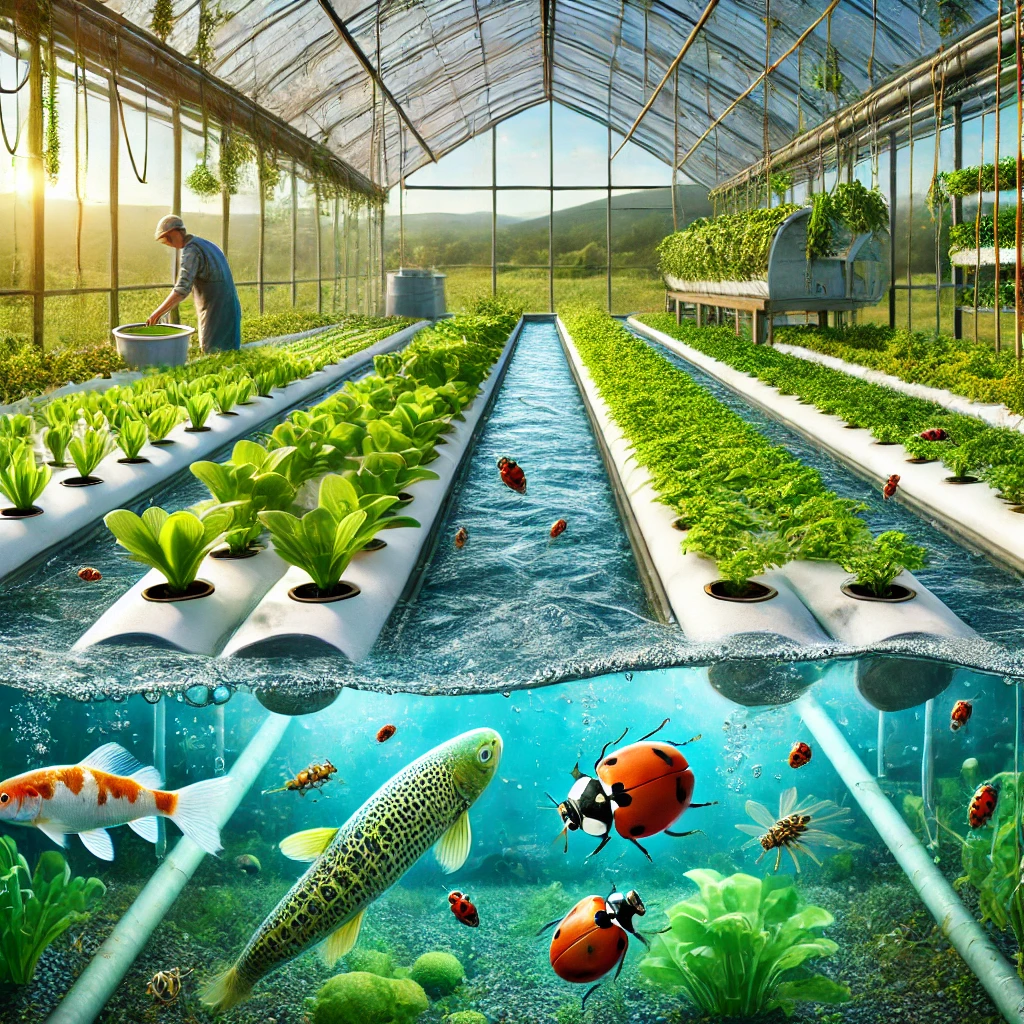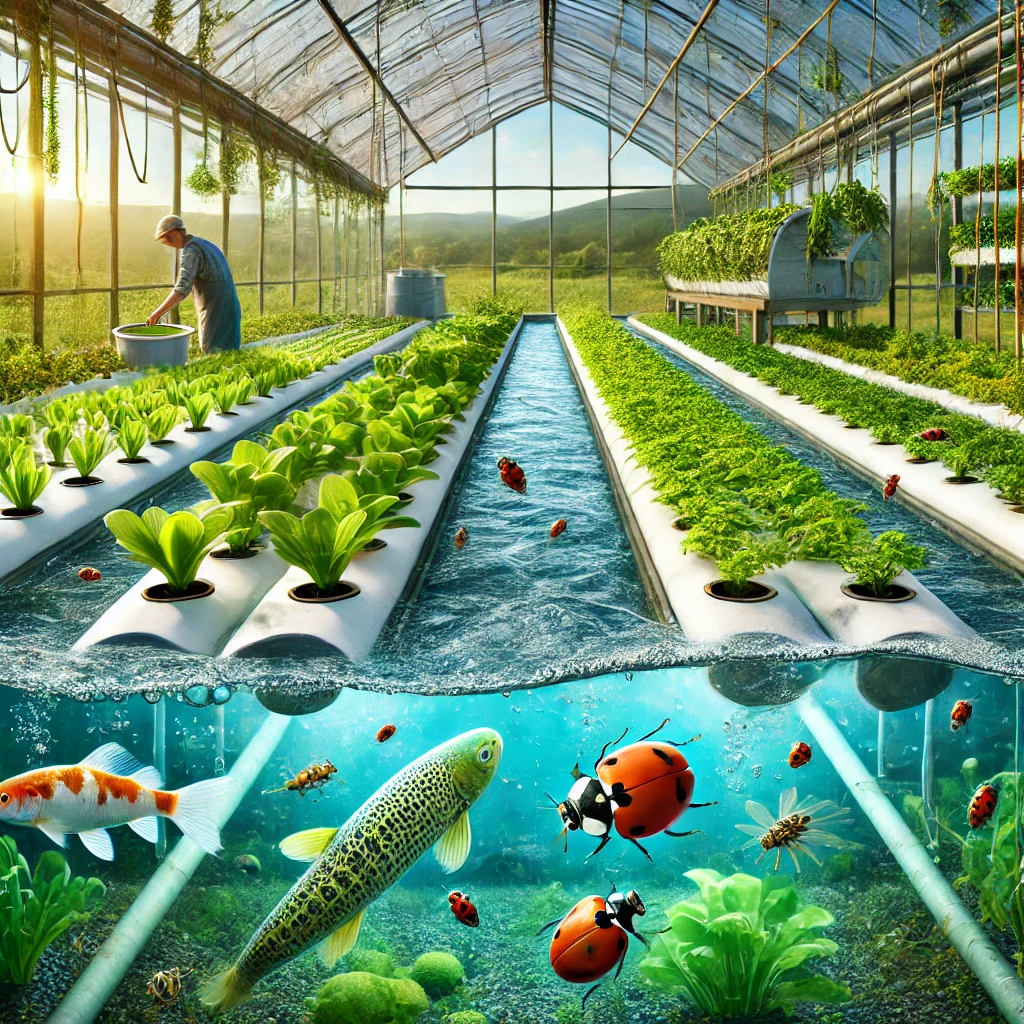
Introduction
Aquaponics combines aquaculture (raising fish) and hydroponics (growing plants without soil) in a closed-loop system that utilizes fish waste as nutrients for plants. While aquaponics is a sustainable method of food production, managing pests without disrupting the delicate balance between fish and plants presents unique challenges. Effective pest control in aquaponics requires sustainable practices that protect both aquatic and plant life while maintaining the system’s ecological balance.
Challenges of Pest Control in Aquaponics Systems
In aquaponics systems, pests can pose threats to plant health without harming fish. Common pests include aphids, spider mites, and whiteflies, which can damage plant leaves and reduce yields. However, traditional chemical pesticides are unsuitable for aquaponics because they can contaminate water and harm fish. Therefore, sustainable pest control methods are essential to protect both the plants and aquatic life in these integrated systems.
Sustainable Pest Control Practices
- Biological Control:
- Introduction of Beneficial Insects: Releasing beneficial insects such as ladybugs, lacewings, and predatory mites can help control pest populations naturally. These insects feed on pests without harming the plants or fish, making them ideal for aquaponics systems.
- Use of Microbial Solutions: Employing microbial pesticides like Bacillus thuringiensis (Bt) can effectively target specific pests, such as caterpillars, without affecting fish or beneficial insects.
- Physical Control Methods:
- Manual Removal: Regularly inspecting plants and manually removing pests by hand is a simple yet effective method. This approach is especially useful for managing larger pests or those found in small numbers.
- Sticky Traps: Placing yellow sticky traps around the system can help catch flying pests like whiteflies and aphids. These traps are non-toxic and provide a visual indication of pest activity.
- Barrier Methods: Using netting or floating row covers can prevent pests from reaching the plants while allowing light and air to penetrate. This physical barrier method is effective for excluding larger pests such as caterpillars and beetles.
- Cultural Practices:
- Crop Rotation and Diversification: Rotating crops and incorporating a variety of plant species can reduce the risk of pest infestations by disrupting pest life cycles and making the environment less favorable for pests.
- Companion Planting: Planting pest-repellent herbs, such as basil, mint, or marigolds, alongside crops can naturally deter pests due to their strong scents and pest-repellent properties. This practice also enhances biodiversity and supports a balanced ecosystem within the system.
- Environmental Control:
- Maintaining Optimal Conditions: Pests often thrive under specific environmental conditions. Maintaining optimal humidity, temperature, and air circulation can make the environment less conducive to pest proliferation. Using fans and shading can help regulate the environment within the aquaponics system.
- Water Management: Regularly monitoring and maintaining water quality is crucial in aquaponics systems. Clean water reduces the likelihood of pests attracted to stagnant or nutrient-rich water conditions, which can also harbor disease.
Integrated Pest Management (IPM) in Aquaponics
Integrated Pest Management (IPM) in aquaponics involves combining multiple pest control strategies to achieve effective management while minimizing risks to fish, plants, and the environment. IPM emphasizes monitoring pest populations, using threshold levels to determine when action is necessary, and integrating biological, physical, and cultural controls as the first line of defense. Chemical controls, such as organic pesticides, are only considered as a last resort.
Future Directions in Sustainable Pest Control
Future advancements in sustainable pest control for aquaponics systems may involve the use of precision technologies like automated pest detection systems, which use sensors and cameras to monitor pest activity in real-time. Additionally, research into developing more effective biological control agents and microbial pesticides that are compatible with aquaponics systems will further enhance sustainable pest management practices.
Conclusion
Sustainable pest control in aquaponics systems requires a holistic approach that integrates biological, physical, and cultural methods. By adopting these practices, aquaponics practitioners can effectively manage pests while maintaining the health of both plants and aquatic life. With ongoing advancements and a commitment to sustainability, aquaponics systems can continue to thrive as a sustainable method of food production.

